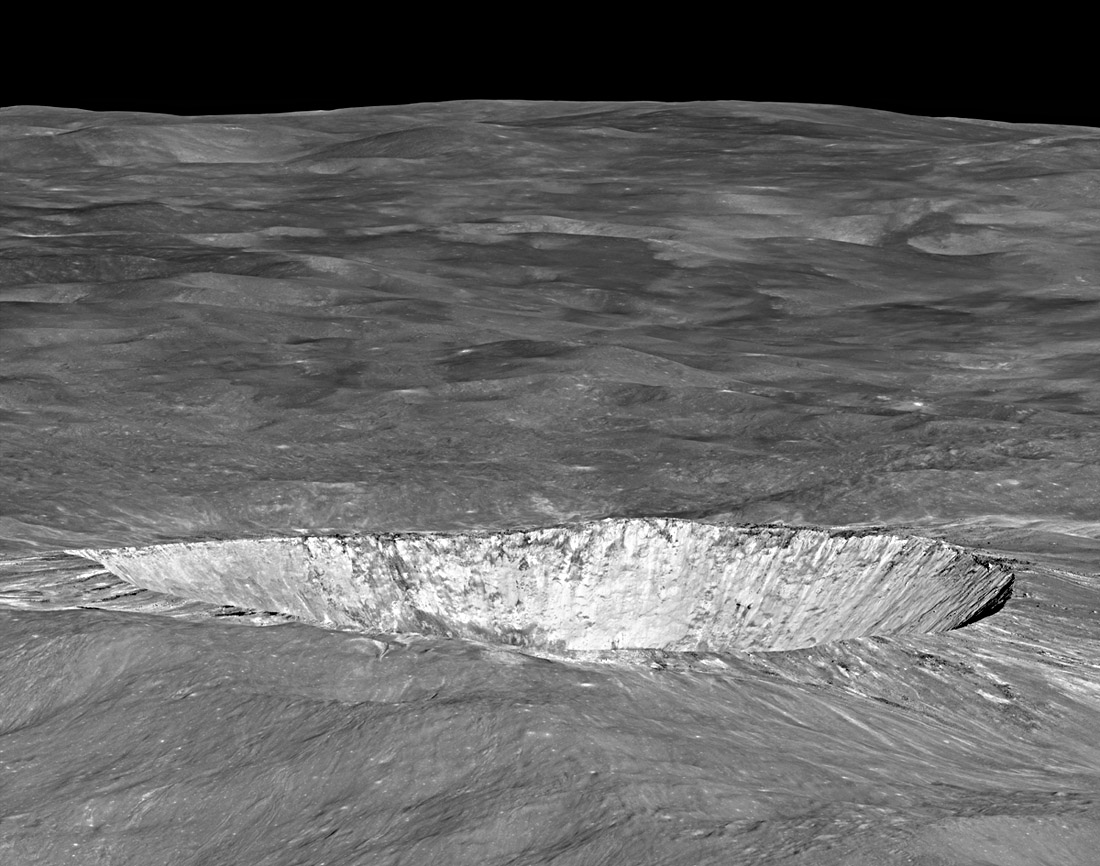June 10, 2022
Bright Hole
Originally published July 18, 2012

LRO WAC image from NASA/GSFC/Arizona State University
Looking at this eastward low oblique view of Giordano Bruno reminds me of two things about impact craters. They have really low rims compared to their depths and diameters, and young craters are really, really bright. Using the QuickMap Path tool I find Bruno's rim height to be variable from about 300 to 600 m, the crater has a depth of about 2,500 m and a diameter of 22,000 m. The rim height is only about 20% of the crater depth and 2% of its width. Craters are holes in the ground with only low rims to announce their presence to the traveller on the ground. A hundred years or so ago selenographers proved their mettle by comparing the volume of a crater's rim with that of the hole. It appeared that the two were about equal, but I am unaware that anyone has repeated that task now that high quality data are actually available. But the assumption that everything that came out of the hole ended up in the rim is clearly not right - rays and secondary craters go far beyond the rim. But I digress from fresh craters - their rims are very bright and, small ones especially, are surrounded by a nimbus of bright material. The brightness comes from pulverization - smashing even a dark rock yields bright powders. On the Moon these bright materials are bombarded by micrometeorites that cause iron in the rock to be vaporised and then redeposited as blebs that are dark, This space weathering darkens bright rays and crater walls into inconspicuous grayness over hundreds of millions of years, with the thin bright deposits of small craters disappearing faster than the thicker bright debris of large craters. Giordano Bruno, whether it formed 900 years ago or a million years earlier is still quite young. And remember you can see it - or its rays that reach nearly to Crisium.
Chuck Wood
Yesterday's LPOD: Creases, Cracks, Fractures And Inflections
Tomorrow's LPOD: Lancing the Moon
COMMENTS?
Register, Log in, and join in the comments.



